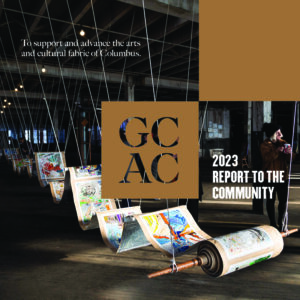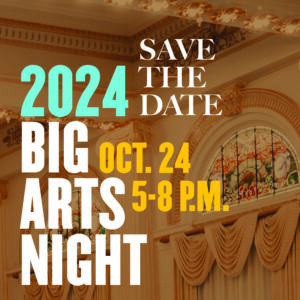Our Impact
Advocacy & Research
The arts exist not only for social, cultural or entertainment value. They also have major impact on the economy and education and serve as a primary way for communities to preserve and celebrate our culture and heritage.
Talking Points
Why The Arts Matter in Central Ohio
The arts have a significant economic impact on the city.
Area nonprofit arts and cultural organizations:
- Generate $412 million annually for the local economy 1
- Employ 14,980 people 1
- Create 17% more jobs and generate 32% more in event-related spending, excluding ticket prices, compared to communities of similar size 1
- Attract nearly 6 million people to events each year 1
- Generate attendance that is 1.6x that of all home sports attendance. 7
Central Ohio’s Creative Economy sector (for and nonprofit arts, design, performance, media and marketing industries):
- Generate $9.1 billion in economic impact each year.9
- Employ over 60,000 people.9
- Supports more than $3 billion in wages and proprietor income.9
The arts attract and retain new talent and business.
- We must attract and retain young professionals to sustain our region’s workforce and attract new businesses to central Ohio.
- Younger workers (Generation Y) choose where they want to live first, and where they want to work second. 2
- Quality of life and job availability are the deciding factors when choosing a location. 2
- Recruiters cite the vibrancy of the local culture and arts community as a major attraction to new talent outside Columbus. 2
The arts are important to residents and visitors.
- In Franklin County, 76% of residents support public funding for the arts. 8
- 82% of Franklin County residents believe public funding for the arts should be county-wide. 8
- 95% of Columbus residents believe the arts greatly enhance the city’s quality of life. 3
The Greater Columbus Arts Council is vital to the success of the region’s arts and culture industries.
- The Arts Council provides the City of Columbus with an objective system to distribute arts and culture funding.
- The Arts Council supports creative artists and arts organizations of all sizes – both large and small – which is a valuable asset in building a healthy cultural community.
- Through Operating and Project Support grants, funded by the City of Columbus, the Arts Council supported 38 arts and cultural organizations in 2023 for a total of $11.3 million and nearly 1,200 artists for nearly 1.8 million.
- Organizations funded by the Arts Council annually reach approximately 500,000 school children with their education programs. 6
- Events such as the Columbus Arts Festival, which attracts nearly 500,000 residents and visitors each year, are free and accessible ways for people to experience the arts.
Source list:
- Arts & Economic Prosperity 5; Americans for the Arts; June 2017.
- Attracting and Retaining Young Workers to Columbus, Columbus Chamber; 2011 update on 2007 study by Chamber and Next Generation Consulting
- Columbus Creative Economy; Greater Columbus Arts Council and AMS Planning and Research; 2007
- Creative Columbus: A Picture of the Creative Economy in Central Ohio; Columbus College of Art and Design and Community Research Partners; July 2009
- Greater Columbus Arts Council internal research based on audits from grantee organizations
- Attendance from 2015, the most recently completed season for arts and sports. Sports attendance of 3,288,739 from publicly available home game attendance for the following teams: Columbus Blue Jackets, Columbus Clippers, Columbus Crew SC, Ohio Machine and men’s and women’s football, basketball, ice hockey, lacrosse and soccer and women’s field hockey at The Ohio State University. Arts attendance of 5,212,745 compiled from physical attendance at 91 central Ohio arts and cultural organizations as submitted to Americans for the Arts for the Arts & Economic Prosperity 5 study to be released in June 2017.
- Phone survey by Saperstein & Associates of registered voters in Franklin County, 2016.
- Ohio’s Creative Economy: The Economic Impact of the Arts and Creative Industries. 2018. Center for Regional Development at Bowling Green State University.



